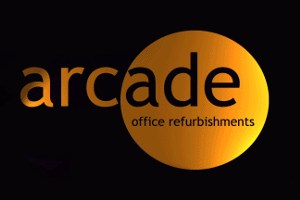Many of us have held jobs but with different companies, but in a similar field. And despite the fact that your role at each company appeared to be very similar, they just felt like very different places to work.
Some people blame their managers, some blame their co-workers, while others are simply happy to denounce their workday routine and workplace benefits. But as we’ve known for over a hundred years now, one of the key factors that determines the happiness of an employee is the design and layout of the workplace.
To some, this may seem strange. But think about it. Do you notice a difference in your productivity depending on whether you have access to daylight or strip fluorescent lighting? Do you feel more lethargic in rooms with no airflow or air conditioning? Do you find work to be more stressful if you are stuck in a claustrophobic cubicle or at an open-air table?
Since the days of Frederick Taylor and his game-changing views on productivity back in the 1920s, the psychology of office design has become a hot topic for any employer who hopes to get the best out of their workers. After all, in the US alone the economy is believed to lose between $450-$550 billion per year in lost productivity due to unhappy workers. So, surely it’s in an employer’s best interest to provide their employees with a workspace and atmosphere that is conducive to helping them reach their peak performance. Right?
How have offices changed over the last hundred years?
Back in the 1920s, Taylor saw an opportunity to run offices in a similar fashion to factory production lines. All workers were placed in a bullpen, overseen by both a floor supervisor at the head of the room, along with a line manager in a private office. The workers found themselves performing smaller, repetitive daily tasks in what could be considered an early forebear of McDonalisation.
Unfortunately, the dehumanisation and lack of privacy in these offices often had a detrimental effect on the psychology of those employed, and these approaches were soon superseded in the 1930s and 1940s by European influenced strategies where office designers were inspired to create a more enjoyable workplace including air conditioning, fluorescent lighting, and a greater number of windows to ensure that work rooms felt less like a prison – a great early example of this is Le Corbusier’s glass curtain wall project in Brazil in 1936.
The next revolution in office design didn’t arrive until the 1950s, when Herman Miller created the once heralded, but now loathed Action Office System – or cubicle. The theory behind their implementation was sound, and even up until the 1990s, cubicle ‘farms’ were shown to increase work productivity thanks to a lack of social distractions. These cubicles were also excellent for re-modelling purposes, as the non-permanent walls could be collapsed and moved at will. However, a lack of access to sunlight, an inability to work due to ‘cubicle neighbours’ being noisy, combined with upper management aspirations to cram as many people into as smaller area as possible led to a reduction in workforce happiness, and diminished the sense of ‘community’ preferred by so many workers.
After the year 2000, the face of large companies began to change as multiple younger entrepreneurs found success with their e-business ideas, and consequently more progressive and experimental views began to find their way into the psychology of office design.
Companies such as Valve, Mozilla, Google, and Facebook saw that the best way to attract the top industry talent was to provide an environment that promoted a heightened feeling of self-worth for their staff including flexible, collaborative workspaces for productivity, while also offering social and recuperative areas nearby within which they could relax or brainstorm.
Younger people often see work as not just a means to an end, but also as an extension of their own personality as well as how they define themselves within the social strata. However, younger people also believe in a greater work-life balance, with many individuals considering the ability to, on occasion, work remotely as a huge factor in deciding whether or not to stay with a company.
How does the psychology of office space affect worker attitudes today?
According to research, today’s workers are at their most productive when provided with the following in a professional office:
- Work areas free from unwanted noise and distraction in order to focus on their projects.
- A high level of air quality to reduce lethargy, as well as avoid the headaches often associated with stale air.
- The constant provision of natural light to help them stay alert and energised throughout the day.
And when these factors are combined with the ‘open’ and ‘flexible’ spaces that more modern companies provide, workers are more willing to celebrate their employers, as opposed to mock them behind their backs for their lack of compassion.
With an ever-increasing number of companies implementing these pro-employee office design concepts, is it any wonder that older, more traditional firms have found themselves losing their best workers? Moreover, does it really shock anyone to learn that a happy employee is more likely to provide a higher standard of work than their more miserable counterparts?
The world of office design today is evolving, and businesses that reach the top of the food chain are the ones that provide their workers with an environment that embraces and strengthens the talent they hold, and the potential they have.
Looking for excellent office designs that increase employee productivity in Manchester, Liverpool, Chester and surrounding areas?
We help with office design and fit out in Manchester other locations nearby. Feel free to get in touch with us for a no obligation chat on 01606 333 150 or use the contact form on the right of this page.
